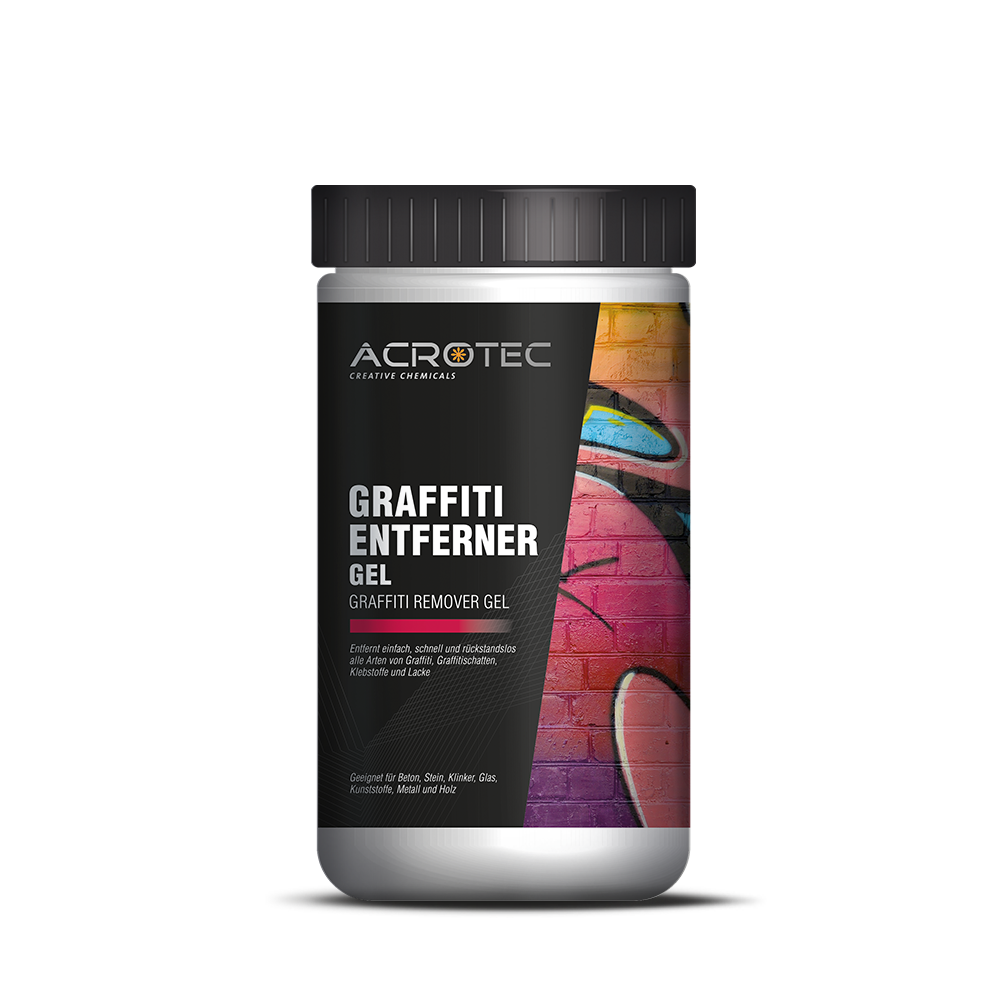Removing graffiti – How to clean walls and facades without leaving any residue
Removing graffiti – unfortunately, this is a recurring issue for many building owners, municipalities, and property managers. What some consider art, others see as a nuisance: unwanted paint smears on walls, garage doors, or facades. Public buildings, transportation facilities, schools, and residential complexes in cities are particularly affected. But don’t worry – with the right product, some know-how, and professional tips, graffiti can be removed reliably and gently.

Why it is important to act quickly
Graffiti should be removed as quickly as possible, and not just for aesthetic reasons. Fresh paint is easier to remove than pigment that has already dried or burned into the surface. Prompt cleaning also prevents other “artists” from seeing the wall as an invitation and adding new tags. Experience shows that quick action provides better protection against repeat offenses.
What to keep in mind when removing graffiti
When removing graffiti, the substrate is particularly important. Not every wall or surface can withstand every cleaning method. A rough distinction can be made between:
Errors during cleaning—such as using overly aggressive cleaners or the wrong tools—can permanently damage or roughen the surface. That is why choosing the right graffiti remover is particularly important.
The right product: GRAFFITI REMOVER GEL from AcroTec
A particularly proven product for removing graffiti is GRAFFITI REMOVER GEL from AcroTec GmbH. This cleaner was specially developed for vertical surfaces such as facades, walls, or partitions and impresses with its:
The product is ideal for natural stone, concrete, clinker, brick, plaster, and many other building materials where liquid products would run off too quickly or penetrate too deeply.

Step-by-step guide: How to remove graffiti properly
- 1
Create a test area: Before working on a large area, it is advisable to create a small test area in an inconspicuous place. This allows you to check how the material reacts to the cleaner.
- 2
Applying the gel: Apply the gel evenly and completely to the stained area using a paintbrush or brush. Make sure that the layer is not too thin.
- 3
Leave to take effect: Depending on the weather, degree of soiling, and surface, you should leave the gel to take effect for 5 to 45 minutes. Important: Do not allow the product to dry! Cover with plastic wrap or keep moist if necessary.
- 4
Mechanical removal: After the application time, you can rinse off the loosened graffiti with a non-scratching sponge, brush, or high-pressure cleaner. Be careful with sensitive surfaces—adjust the pressure accordingly!
- 5
Follow-up treatment: For highly porous or open materials, it is advisable to apply an impregnation after cleaning. This protects against further penetration of stains and makes future cleaning easier.
What to do in stubborn cases?
Some paints or markers adhere particularly strongly, especially in older graffiti. In such cases, we recommend the following:
However, special care must be taken with painted surfaces such as vehicles, garage doors, or metal facades—here you should use a product that is specifically suitable for non-absorbent surfaces (contact the manufacturer if necessary).
How can graffiti be prevented in the long term?
Graffiti is almost impossible to prevent entirely. But you can reduce the risk by taking preventive measures:
Conclusion: Removing graffiti is easy and safe with the right product.
Graffiti can be annoying – but it doesn’t have to be. With GRAFFITI REMOVER GEL from AcroTec, you have a highly effective yet gentle cleaning product that works reliably on almost all mineral surfaces. It is easy to use, effective, and suitable for both private and commercial use.
Tip: For stubborn cases or large areas, seek advice from a specialist company – AcroTec also offers test areas and individual advice.